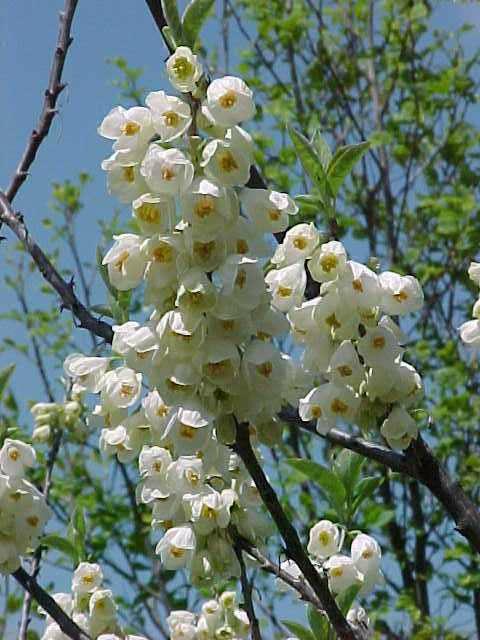Carolina silverbell (Halesia carolina)
Carolina silverbell
Halesia carolina, commonly called Carolina silverbell or silverbell tree, is a small, deciduous, understory tree native to the Piedmont and southern Appalachian Mountains of the southeastern United States. It is typically found growing on lower mountain slopes, bluffs, and stream banks in rich, mesic soil. In the wild Carolina silverbell typically does not exceed 35′ in height (though specimens have been found in the 80-100′ range), and is frequently shrubby in habit. Features drooping clusters (usually 2-5 flowers each) of bell-shaped, white flowers (1/2″) which appear in April shortly before or simultaneous to the point when the leaves emerge. Four-winged, brownish, nut-like fruits appear in the fall and often persist well into the winter. Dull, finely toothed, dark yellowish-green, ovate-oblong leaves (2-5″ long) turn a somewhat attractive yellow in fall, but may drop rather early. Synonymous with Halesia tetraptera (tetraptera meaning four-winged).
Genus name honors the Reverend Stephen Hales (1677-176- , English physiologist, chemist, and inventor.
Specific epithet means of North or South Carolina.

Easily grown in average, medium, well-drained soil in full sun to part shade. Prefers moist, acidic, organically rich soils in part shade. May be grown as a large, multi-stemmed shrub or trained as single trunk tree.
| Hardiness zone | 4 - 8 |
| Sun light | Full sun to part shade |
| Water | Medium |
| Maintenance | Low |
No serious insect or disease problems. Susceptible to chlorosis in high pH soils.
Attractive, small tree or large shrub for the shrub border or woodland garden. Interesting specimen for the lawn. Grows well with rhododendrons and azaleas.
| Common name | Carolina silverbell |
| Botanical name | Halesia carolina |
| Plant type | Tree |
| Family | Styracaceae |
| Hardiness zone | 4 - 8 |
| Water | Medium |
| Maintenance | Low |
| Flower color | White |
| Flowering period | April |
| Height | 30 - 40 ft. |
| Width | 20 - 35 ft. |